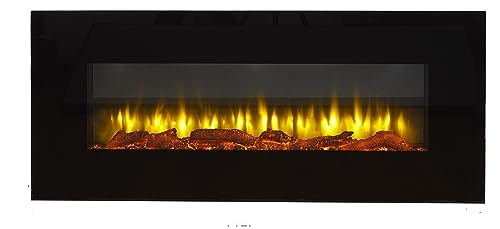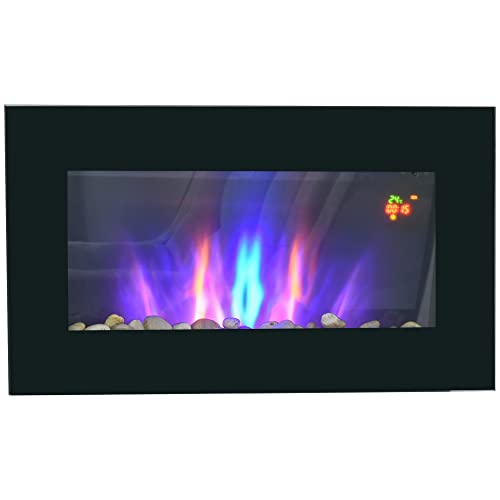Five Killer Quora Answers To Small Woodburners
페이지 정보

본문
Installing Small Woodburners Safely
Whether you live in an apartment or a cabin, a woodburner in a small space can add a cosy feel to your living space. But, there are some regulations that you must follow for ensuring that your stove is set up in a safe manner.
These rules require certain distances between the stove and combustible material. This guide will assist you.
Room Size
Woodburners can be found in a variety of outputs. It is important to consider the size of your home when choosing a stove. Many people make the mistake of purchasing a wood burner that is too big for their home, and this can have a negative impact on the performance and efficiency of the stove. It is crucial to visit the showroom to determine the size of the woodburner which is ideal for your home, and to use a stove-sizing calculator calculate how much heat it will generate.
Multiply the length, width and height of a room in meters. Then, divide this number by 14 to discover the approximate heat requirement. This is an approximate guide. Other factors, such as the amount of insulation in the building or the number of walls outside, or the size of windows in a room can affect the actual heat output needed.
It is also worth noting that any stove that has an output of greater than 5kW needs proper ventilation and a ventillation kit or basic air brick will be required. This is to ensure that combustion of the wood is carried out efficiently and the stove doesn't get too hot, which could decrease its efficiency and create excessive soot deposits on the glass of the stove and inside the chimney.
It is also important to remember that your very small wood burning stove woodburner should be installed at a specific distance from both combustible and non-combustible surfaces that have a specified value. These specifications will be provided in the manufacturer's handbook so be sure to use this when installing your stove and adhere to these guidelines. Keep your stove free of non-combustible or combustible materials will help you to avoid any fire safety problems and ensure safety of your log burner.
Flue System
The flue system is a way that allows the exhaust gases of your modern wood burning stove-burning stove to be vented outside. This helps to maintain the cleanliness of indoor air and prevents the accumulation of harmful odours and pollutants. The flue also blocks heat transfer to combustible materials in your home, avoiding the risk of fire and smoke damage.
It is essential to maintain your flue, which is an integral component of any fireplace or stove. You can accomplish this by regularly cleaning the flue, and ensuring it has proper ventilation. You may have to hire a professional to inspect and clean your chimney if it's clogged. Creosote may build up in the flue due to the flammable wood products that are burned. If it builds to a high level it could ignite, causing chimney fires and other issues.
There are several different types of flues available for your fireplace or woodburning stove, including masonry chimneys and double-wall flue systems. Double-wall flues are made from stainless steel chimney liners. Masonry chimneys, on the other hand are constructed with mortar and bricks. Masonry chimneys work with a wide range of fireplaces, but they must be checked by an engineer who is registered with Gas Safe with a flue-gas analyzer to verify that the chimney lining and chimney are functioning properly.
If you have an older chimney made of masonry that needs relining, you can opt for a flexible chimney liner to provide an unbroken and smooth surface from the fireplace to the outlet. They are available in a variety of diameters and can be installed either externally or internally dependent on the layout of your fireplace. They also have insulation that keeps the flue gas warmer and improves efficiency.
Twin wall flue systems are a popular option for homes without traditional chimneys. They are easy to install and come with a double-skinned stainless steel that is smooth on the inside and textured on the exterior, which is ideal for achieving high temperatures. They can be used with double-wall chimneys as well as masonry chimneys but they can only be placed in houses that are compliant with strict building regulations.
Distances from combustible Surfaces
The amount of space you need to keep around your stove is one of the most important factors when deciding on a woodburner. You don't want your new small woodburner to be close to any combustible material since they can get extremely hot and pose the risk of a fire.
The majority of woodburners have guidelines on the distance from combustible surfaces you need to keep them, this information is available in the instruction manual of the stove and is typically specified in terms of distances to the front, rear and sides. However, these guidelines could vary based on the kind of wood burning stove for shed burner and the amount of heat they offer.
To prevent any risk from occurring We strongly suggest that to follow the guidelines set by the manufacturer of your woodburner. Regular inspections and maintenance performed by professionals are crucial to ensure the safety of your woodburner.
During these inspections your woodburner technician will be able to identify any potential problems or safety issues and make sure you're following the right guidelines to safeguard your home and family. It is also recommended to install carbon monoxide detectors close to your woodburner and keep them in good condition.
Some woodburners require a large space to be protected from combustible materials to decrease the chance of them reaching their ignition point. The manufacturer will usually specify this in the manual for the stove, which you can download from their website.
You can install a wall protector to reduce the clearances required for your stove as a way to maintaining that space. They are subjected to rigorous tests and are certified by the manufacturers to be capable of safely reducing the necessary clearances.
A wall shield consists of a thin, metal frame which is positioned on the stove's back, covering the flue system. This type of barrier prevents the walls from heating and burning an ignitable material behind them. This is a good option particularly for newly constructed homes, where the construction is mostly composed of sheetrock (gypsum), or brick veneers, which do not offer much protection against the high temperatures generated by a woodburner.
Shielding Combustible Surfaces
 Woodburning stoves produce a lot of heat. This means that there is a risk of causing damage to walls around the stove and in its close vicinity. Installing a wall shield will reduce the heat from the stove, while also protecting the wall. Wall protections are available in a range of forms that range from simple heat shields to more sophisticated built-in models. The most effective wall protections blend brick and metal to stop the heat from the stove from getting to the walls, and reflecting it back.
Woodburning stoves produce a lot of heat. This means that there is a risk of causing damage to walls around the stove and in its close vicinity. Installing a wall shield will reduce the heat from the stove, while also protecting the wall. Wall protections are available in a range of forms that range from simple heat shields to more sophisticated built-in models. The most effective wall protections blend brick and metal to stop the heat from the stove from getting to the walls, and reflecting it back.
The type of wood that is burned in the stove must be likewise considered. Certain kinds of wood tend to produce creosote that can block the chimney and increase the risk of an explosion. To prevent this from happening risk, it's a good idea to only make use of seasoned wood for stove use. This will ensure that the fire is sufficiently hot to eliminate any moisture and limit the formation of creosote.
Some examples of seasoned hardwoods that are suitable include Ash, Elm, and Beech. Pine is not a good option, as it tends to produce a lot of smoke and has an oily appearance that can cause creosote that looks like tar in the flue system. Larch wood is not recommended due to its susceptible to Phytophthora ramorum disease. It also can pose health hazards when taken out of its natural habitat.
If you require a smaller woodburner for your loft apartment or country nook, there's a stove to suit your living space and budget. Selecting the right type of woodburner is crucial to maximize energy efficiency and comfort. By staying clear of bigger and more expensive stoves you can save on running costs while still having the warm atmosphere that comes with a traditional woodburner.
Whether you live in an apartment or a cabin, a woodburner in a small space can add a cosy feel to your living space. But, there are some regulations that you must follow for ensuring that your stove is set up in a safe manner.
These rules require certain distances between the stove and combustible material. This guide will assist you.
Room Size
Woodburners can be found in a variety of outputs. It is important to consider the size of your home when choosing a stove. Many people make the mistake of purchasing a wood burner that is too big for their home, and this can have a negative impact on the performance and efficiency of the stove. It is crucial to visit the showroom to determine the size of the woodburner which is ideal for your home, and to use a stove-sizing calculator calculate how much heat it will generate.
Multiply the length, width and height of a room in meters. Then, divide this number by 14 to discover the approximate heat requirement. This is an approximate guide. Other factors, such as the amount of insulation in the building or the number of walls outside, or the size of windows in a room can affect the actual heat output needed.
It is also worth noting that any stove that has an output of greater than 5kW needs proper ventilation and a ventillation kit or basic air brick will be required. This is to ensure that combustion of the wood is carried out efficiently and the stove doesn't get too hot, which could decrease its efficiency and create excessive soot deposits on the glass of the stove and inside the chimney.
It is also important to remember that your very small wood burning stove woodburner should be installed at a specific distance from both combustible and non-combustible surfaces that have a specified value. These specifications will be provided in the manufacturer's handbook so be sure to use this when installing your stove and adhere to these guidelines. Keep your stove free of non-combustible or combustible materials will help you to avoid any fire safety problems and ensure safety of your log burner.
Flue System
The flue system is a way that allows the exhaust gases of your modern wood burning stove-burning stove to be vented outside. This helps to maintain the cleanliness of indoor air and prevents the accumulation of harmful odours and pollutants. The flue also blocks heat transfer to combustible materials in your home, avoiding the risk of fire and smoke damage.
It is essential to maintain your flue, which is an integral component of any fireplace or stove. You can accomplish this by regularly cleaning the flue, and ensuring it has proper ventilation. You may have to hire a professional to inspect and clean your chimney if it's clogged. Creosote may build up in the flue due to the flammable wood products that are burned. If it builds to a high level it could ignite, causing chimney fires and other issues.
There are several different types of flues available for your fireplace or woodburning stove, including masonry chimneys and double-wall flue systems. Double-wall flues are made from stainless steel chimney liners. Masonry chimneys, on the other hand are constructed with mortar and bricks. Masonry chimneys work with a wide range of fireplaces, but they must be checked by an engineer who is registered with Gas Safe with a flue-gas analyzer to verify that the chimney lining and chimney are functioning properly.
If you have an older chimney made of masonry that needs relining, you can opt for a flexible chimney liner to provide an unbroken and smooth surface from the fireplace to the outlet. They are available in a variety of diameters and can be installed either externally or internally dependent on the layout of your fireplace. They also have insulation that keeps the flue gas warmer and improves efficiency.
Twin wall flue systems are a popular option for homes without traditional chimneys. They are easy to install and come with a double-skinned stainless steel that is smooth on the inside and textured on the exterior, which is ideal for achieving high temperatures. They can be used with double-wall chimneys as well as masonry chimneys but they can only be placed in houses that are compliant with strict building regulations.
Distances from combustible Surfaces
The amount of space you need to keep around your stove is one of the most important factors when deciding on a woodburner. You don't want your new small woodburner to be close to any combustible material since they can get extremely hot and pose the risk of a fire.
The majority of woodburners have guidelines on the distance from combustible surfaces you need to keep them, this information is available in the instruction manual of the stove and is typically specified in terms of distances to the front, rear and sides. However, these guidelines could vary based on the kind of wood burning stove for shed burner and the amount of heat they offer.
To prevent any risk from occurring We strongly suggest that to follow the guidelines set by the manufacturer of your woodburner. Regular inspections and maintenance performed by professionals are crucial to ensure the safety of your woodburner.
During these inspections your woodburner technician will be able to identify any potential problems or safety issues and make sure you're following the right guidelines to safeguard your home and family. It is also recommended to install carbon monoxide detectors close to your woodburner and keep them in good condition.
Some woodburners require a large space to be protected from combustible materials to decrease the chance of them reaching their ignition point. The manufacturer will usually specify this in the manual for the stove, which you can download from their website.
You can install a wall protector to reduce the clearances required for your stove as a way to maintaining that space. They are subjected to rigorous tests and are certified by the manufacturers to be capable of safely reducing the necessary clearances.
A wall shield consists of a thin, metal frame which is positioned on the stove's back, covering the flue system. This type of barrier prevents the walls from heating and burning an ignitable material behind them. This is a good option particularly for newly constructed homes, where the construction is mostly composed of sheetrock (gypsum), or brick veneers, which do not offer much protection against the high temperatures generated by a woodburner.
Shielding Combustible Surfaces
 Woodburning stoves produce a lot of heat. This means that there is a risk of causing damage to walls around the stove and in its close vicinity. Installing a wall shield will reduce the heat from the stove, while also protecting the wall. Wall protections are available in a range of forms that range from simple heat shields to more sophisticated built-in models. The most effective wall protections blend brick and metal to stop the heat from the stove from getting to the walls, and reflecting it back.
Woodburning stoves produce a lot of heat. This means that there is a risk of causing damage to walls around the stove and in its close vicinity. Installing a wall shield will reduce the heat from the stove, while also protecting the wall. Wall protections are available in a range of forms that range from simple heat shields to more sophisticated built-in models. The most effective wall protections blend brick and metal to stop the heat from the stove from getting to the walls, and reflecting it back.The type of wood that is burned in the stove must be likewise considered. Certain kinds of wood tend to produce creosote that can block the chimney and increase the risk of an explosion. To prevent this from happening risk, it's a good idea to only make use of seasoned wood for stove use. This will ensure that the fire is sufficiently hot to eliminate any moisture and limit the formation of creosote.
Some examples of seasoned hardwoods that are suitable include Ash, Elm, and Beech. Pine is not a good option, as it tends to produce a lot of smoke and has an oily appearance that can cause creosote that looks like tar in the flue system. Larch wood is not recommended due to its susceptible to Phytophthora ramorum disease. It also can pose health hazards when taken out of its natural habitat.
If you require a smaller woodburner for your loft apartment or country nook, there's a stove to suit your living space and budget. Selecting the right type of woodburner is crucial to maximize energy efficiency and comfort. By staying clear of bigger and more expensive stoves you can save on running costs while still having the warm atmosphere that comes with a traditional woodburner.

- 이전글Need Inspiration? Look Up Audi Car Key 24.12.07
- 다음글Are You Responsible For A Best Crib Newborn Budget? Twelve Top Tips To Spend Your Money 24.12.07
댓글목록
등록된 댓글이 없습니다.


 한국어
한국어  plastic surgery center
plastic surgery center





